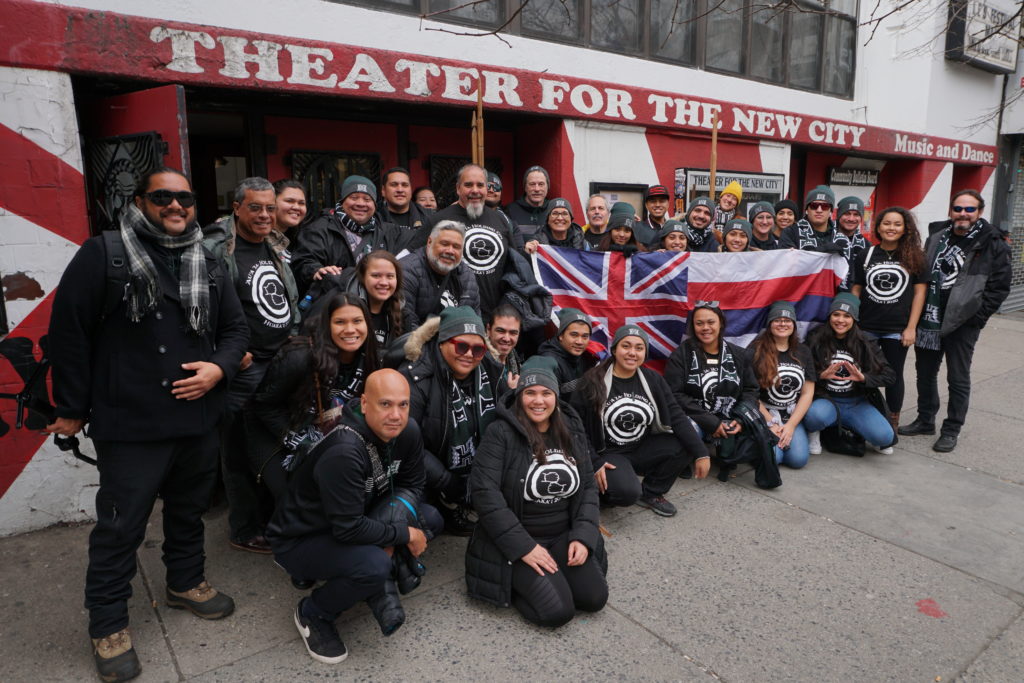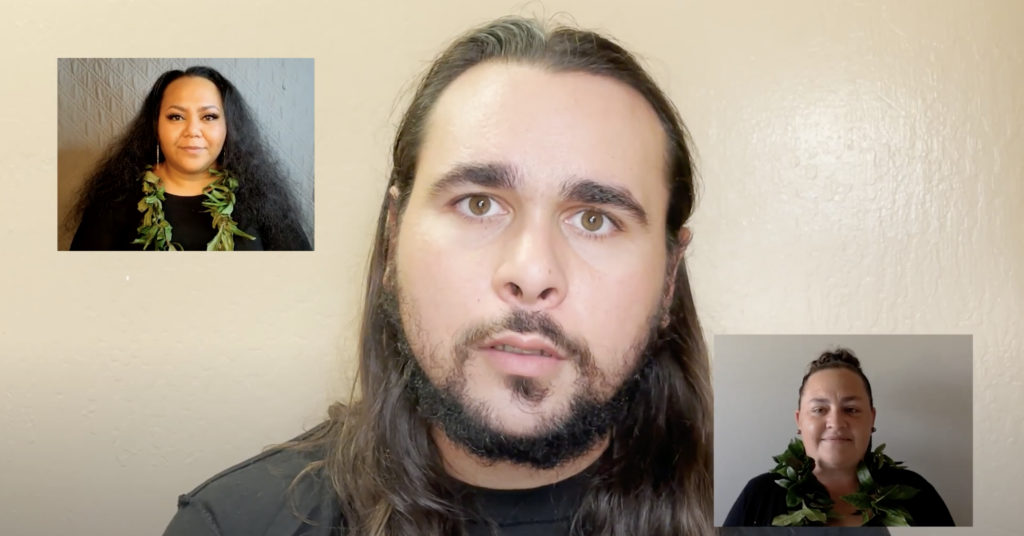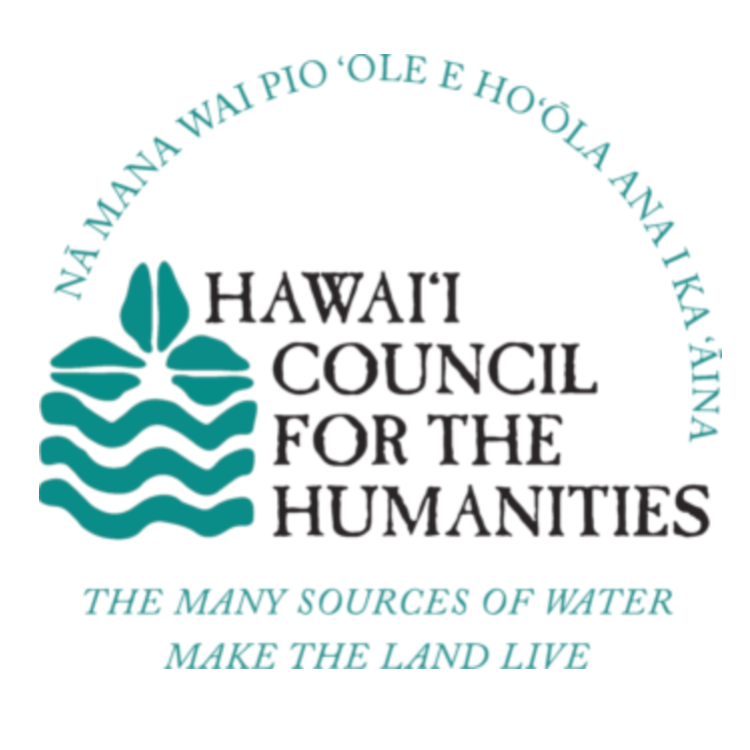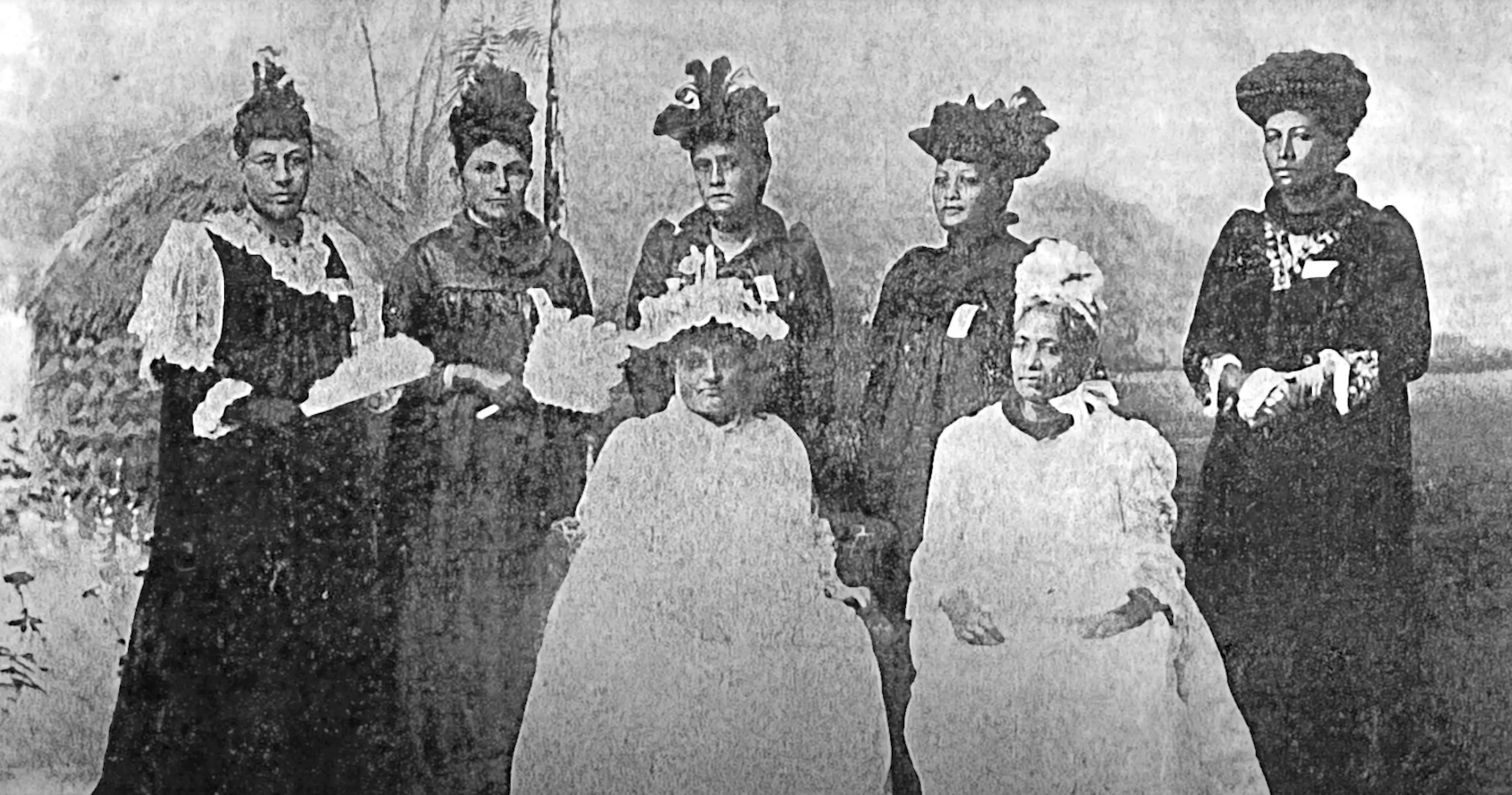E ō e Hawai‘i nui Kuauli, ka moku o Keawe,
E ō e Maui nui a Kama, nā hono a‘o Pi‘ilani,
E ō e Kaho‘olawe, Kanaloa Moku,
E ō e Lāna‘i o Ka‘ululā‘au,
E ō e Moloka‘i nui a Hina,
E ō e O‘ahu nui-a-Lua, Ka ‘ōnohi o nā kai ‘ewalu,
E ō e Kamawaelualani, Kaua‘i o Manokalanipō
E ō e Ni‘ihau o Kahelelani,
E ō e Lehua, Ka‘ula a me Nihoa, nā moku kā‘ili lā.
He ‘ōlinolino aloha kēia i nā moku o kō Hawai‘i Pae ‘Āina a me ona mau kānaka i aloha a māke‘e nui i ia mau mokupuni me ka ‘oia‘i‘o o ia mea he aloha ‘āina.
Aloha mai nō kākou e nā hoa makamaka heluhelu o Nā Mana Wai.
Ia‘u e no‘ono‘o ana i ka‘u mea e kākau ai no kēia papahana, ua kau ko‘u no‘ono‘o i ka ‘ōlelo kaulana a James Keauiluna Kauli‘a, ke alaka‘i o Ka Hui Aloha ‘Āina i ka wā i ‘i‘ini ai ‘o ‘Amelika i ka ho‘ohui ‘āina me kō Hawai‘i Pae ‘Āina. Wahi a Kauli‘a, “‘A‘ole loa kākou, ka lāhui, e ‘ae e ho‘ohui ‘ia ko kākou ‘āina me ‘Amelika a hiki i ke Aloha ‘Āina hope loa.” ‘O ia ala kekahi o nā kūpuna hiwahiwa o kākou Hawai‘i, i kū‘ē i ka ho‘ohui ‘āina. Pēlā nō ho‘i ka hana a nā wāhine kū‘ē o ia wā e la‘a me Emma ‘Aima Nāwahī lāua ‘o Abigail Kuaihelani Campbell ma o nā palapala kū‘ē ho‘ohui ‘āina. Ua kūlia nā kūpuna i ka nu‘u, a kū nō ho‘i i ka ni‘o. He aloha ‘āina ‘oia‘i‘o.
Through a partnership with the Hawai‘i Council for the Humanities and the King Kamehameha V Judiciary History Center, the Hawaiian Theatre Program honored the legacy of resistance and the extraordinary efforts of ‘Aima Nāwahī and Kuaihelani Campbell with a virtual reenactment of the play, Ka Lei Maile Aliʻi – The Queen’s Women written by Helen Edyth “Didi” Maile Lincoln Lee Kwai. This play has been performed over the past twenty years by Hui Aloha ʻĀina o Ka Lei Maile Aliʻi in community spaces across our island chain as a way to embody and intimately feel our histories and ancestors. For Nā Wāhine Kū‘ē: Women of Resistance, I had the opportunity to reimagine and adapt Ka Lei Maile Aliʻi for a digital platform. Knowing that I’d be working virtually with all of the actors, I focused on the leo (voice) and words of our ancestors that evoked the concept of Aloha ‘Āina. The leo and the intention of their words was the guiding light for the virtual performance. The cast included Kimberlee Stone as Miriam Michelson, Leleaʻe Kahalepuna Wong as Emma ‘Aima Nāwahī, Keʻalohi Reppun as Abigail Kuaihelani Campbell, Hi‘ilani Kim-Dela Cruz Okimura as the Translator for Michelson, Keao NeSmith as the Minister, and the following actors, who comprised the ensemble of Kānaka (citizens of the Kingdom) for the performance, Ke‘alalaua‘e Cressy, Ākea Kahikina, Kaipulaumakaniolono, Maki‘ilei Ishihara, Jorin Young, Dylan Lee, Kalama Kala‘i-Morales, Ka‘iukapu Baker, Keola Simpson, and Ka‘ula Krug. All cast members were students and alumni from the University of Hawaiʻi at Mānoa, many of them had performed in ‘Au‘a ‘Ia: Holding On, the most recent production of The Hawaiian Theatre Program.

The impact of retelling the mo‘olelo of our ancestors is multifold. At the surface level, it allows us to learn the history of our ancestors. When we dig in further, ancestral memory is awakened and we reconnect genealogically with them. We become our ancestors. On an emotional level, embodying our kūpuna deepens our empathy for their struggles. This allows us to walk in their footsteps, carry their burdens, and experience their triumphs. Spiritually, we unite with the ideologies, epistemologies, ontologies, and wailua of our lāhui. Ultimately, learning and performing these mo‘olelo empowers our identity and consciousness as Kanaka Maoli.(1) Perspectives on this concept of embodying the mo‘olelo of our kūpuna is shared in the following three essays written by haumāna enrolled at the University of Hawai‘i at Mānoa, all of whom performed in Ka Lei Maile Ali‘i.

Lily Hi‘ilani Kim-Dela Cruz
Being a panelist for “Nā Wāhine Kūʻē: Women of Resistance” and acting in the digital retelling of Ka Lei Maile Aliʻi – The Queen’s Women was truly an honor. As Kanaka Maoli artists and creators, we take on the kuleana of learning and honoring the history and moʻolelo of our kūpuna, and then retell these moʻolelo to share the lessons they teach us to educate, call to action, and incite change.
Playing the Translator Ka Lei Maile Aliʻi, my lines were in both English and ʻōlelo Hawaiʻi. I was both excited and nervous to take on this role as I am currently learning ʻōlelo Hawaiʻi and knew this would be a great opportunity to practice and hear myself speak. During the filming process, Kumu Hailiʻōpua worked with me on my pronunciation, giving me helpful feedback on how to improve my skills, and we also spent some time discussing the script and the Kūʻē Petitions and rallies. This would prove to be helpful for me in understanding who I was playing, and thus, what is happening in the drama. As performers and audience members, it is necessary to contextualize the stories we read and the art we view, for they can reveal the deeper meanings behind the histories and events they are evoking.
The “Nā Wāhine Kūʻē: Women of Resistance” event hosted by Dr. Aiko Yamashiro from the Hawaiʻi Council for the Humanities and Brieanah Gouveia from the King Kamehameha V Judiciary History Center was a great experience to view Ka Lei Maile Aliʻi and give credit to the wāhine, our kūpuna, who led the Kūʻē Petitions and resistance against the Hawaiʻi annexation to the United States. Kumu Noenoe Silva’s beautiful presentation on the Hui Aloha ʻĀina o nā Wāhine and The Kūʻē Petitions gave historical context to the events that appear in Ka Lei Maile Aliʻi, and Emelia Kandagawa of Hui Aloha ʻĀina o Ka Lei Maile Aliʻi perfectly described the process of retelling our kūpuna’s stories. When we took on these roles, we were not “pretending” to be characters, and in fact, they are not even characters: they are our kūpuna, and they always find a way to communicate to us and guide us on the path we need to take. We took on the kuleana to retell the events in Ka Lei Maile Aliʻi, so it was important that we channeled our kūpuna for their guidance;only then could we truly understand what was going on, and be ready to share their stories.
Kaipulaumakaniolono
Writing in the Hawaiian language newspaper Ka Nai Aupuni in 1906, Joseph Mokuohai Poepoe opens his “Moolelo Hawaii Kahiko” in quoting the Roman intellectual Cicero, “A o ka Moolelo… oia ka mea e hoao ai i ka manawa; oia ka malamalama o ka oiaio; ke ola o ka hoomanao; ka elele o ka wa kahiko” (1 February 1906, Ka Nai Aupuni)(2). In reading and especially performing the short play Ka Lei Maile Aliʻi, an intimate connection is kindled between ourselves and the ancestor that we are channeling. Particularly in the incredibly engaging format of public testimony, where one’s naʻau is already hāmama, the actor is posited as a witness to the manaʻo expressed. As a practitioner of hana keaka, the purifying and emptying of the self in order to streamline the manaʻo of our kūpuna is the summit for which we strive.
Aunty Didi’s hana keaka lends itself to this ambition, allowing actor and audience alike to hoʻāo i ka manawa, to illuminate ka mālamalama o ka ʻoiaʻiʻo, to recall ke ola o ka hoʻomanaʻo and to become ka ʻelele o ka wā kahiko. Ka Lei Maile Aliʻi is a node in the recent genealogy of moʻolelo that our lāhui has reclaimed. It is a pōhaku which has been reset into the kahua of our lāhui so that we may begin to kūkulu what once was, what now is and what will be ke ea o ka ʻāina.
Ka‘ula Kauikeaokea Krug
ʻAuhea ʻoe e kama, e ʻauʻa mai i ka ʻike, e ʻauʻa mai i ka leo, e ʻauʻa mai i nā moʻolelo o kūpuna mā, a e ʻauʻa aku i ka lima kāohi o Maleka mā. ʻO ka holo lōʻihi maila nō ia o nā makahiki lōʻihi o ka noho hewa ʻia o Hawaiʻi. Āhea ana lā ka wā e kū ai hoʻi ka mākaia? Nui lehulehu ka hana o kūpuna mā no ka paio kūmaumau ʻana i ka hoʻohui ʻāina a ʻaʻole ana e pau ia kūʻēʻē ʻana ā hiki i ke aloha ʻāina hope loa. Ma loko o nā hana keaka ʻo ʻAuʻa ʻIa: Holding On lāua me Ka Lei Maile Aliʻi mākou i kuahaua ai i nā moʻolelo o ka wā i hala. He mau moʻolelo hoʻoniua puʻuwai no nā kaua hahana welawela i hoʻouka ʻia me ke koa launaʻole e kūpuna mā. Eia naʻe, ʻaʻole i laha ia mau moʻolelo e like me kai makemake ʻia. Ma laila ka pahuhopu o mākou ma ka Hālau Hana Keaka. E hoʻolaha i nā moʻolelo hanohano o ka wā ma mua e ʻike ʻia ai ka wiwoʻole maoli nō o ke aloha ʻāina ʻoiaʻiʻo. ʻO ka mōlia ʻana i ke ola no ka pono o ke aupuni a me nā kūpuna ka hoʻoilina hiwahiwa loa i ili mai i ō kākou nei. ʻAʻole e pau kēia paio like ʻana o kākou no ke ola o ka Hawaiʻi ʻana ā hiki i ke aloha ʻāina hope loa.
1. Baker, T. H. (2019). The Development and Function of Hana Keaka (Hawaiian-medium Theatre): A Tool for the Empowering Kanaka Maoli Consciousness (Thesis, Doctor of Philosophy (PhD)). The University of Waikato, Hamilton, New Zealand. Retrieved from https://hdl.handle.net/10289/12425
2. “History is truly the witness of times past, the light of truth, the life of memory, the teacher of life, the messenger of antiquity.”
Kaʻulakauikeaokea Krug Aloha hoʻi iā ʻoukou e nā ʻōlali hiwahiwa e kakaʻi mau nei ma kahi ala hāiki e lapaʻau ai ke ola o ia makana laʻahia ʻo ka ʻŌlelo Makuahine. ʻO wau kēia ʻo Kaʻulakauikeaokea Krug. No ka ʻolu hāhana welawela ʻo Waiʻanae mai au. He haumāna makahiki ‘ekolu au ma ke Kula Nui o Hawaiʻi ma Mānoa.
Kaipulaumakaniolono No nā Pali Hāuliuli o ke Koʻolau, ka wehi Pōʻaihale o Kahaluʻu i ka ʻōnohi o nā kai ʻewalu ke kama ʻo Kaipulaumakaniolono. He haumāna MFA Hana Keaka ma ke kula nui o Hawaiʻi ma Mānoa e nune kaiewa ana i ka pono mau a me ka mua aku o kō Hawaiʻi moʻolelo ʻōiwi me ona lāhui pili pū. Nāna nō alakaʻi i kāna hana keaka laeoʻo ʻo He Leo Aloha i ka Hāʻulelau 2021. Ua kono ʻia ʻo Kaipulaumakaniolono e oli ma ka hōʻikeʻike ʻo Art of the Chanter (2017) a he mele hoʻi kāna i haku pū ai me kona makuahine i paʻa i ka pāleo a Nā Palapalai ʻo Back to the Patch (2019). ʻO kāna mele hope i hoʻopaʻa iho nei ʻo ia nō ʻo I Kuanoʻo (2020) me Ikaakamai, e loaʻa nō ia mele ma nā paena punaewele hoʻoheno mele like ʻole o ke ao.
Lily Hiʻilani Kim-Dela Cruz Okimura is from Maunalua, Oʻahu. Hi‘ilani has just completed her first year of graduate school where she’s working towards her MFA in Hawaiian Theatre. Her work focuses on themes of resilience, representation, solidarity, and mental health awareness. As a Kanaka Maoli actress, she sees it as her kuleana to honor and share our people’s moʻolelo, as well as work with and uplift fellow Kanaka Maoli artists and creators. Her most recent works include ʻAuʻa ʻia: Holding On, Integral Bodies, and Kōkua! Ayudarse! at Kennedy Theatre, The Wolves at Kailua Onstage Arts, and All’s Well that End’s Well at the 2018 Hawaiʻi Shakespeare Festival. This fall she will perform in He Leo Aloha opening Kennedy Theatre’s 2021-2022 season.
Playwright/Director Tammy Haili‘ōpua Baker is an Associate Professor in the Department of Theatre and Dance at the University of Hawai‘i at Mānoa where she is the Director of the Hawaiian Theatre and Playwriting Programs. Her work centers on the development of an indigenous Hawaiian theatre aesthetic and form, language revitalization, and the empowerment of cultural identity through stage performance. Baker is the artistic director of Ka Hālau Hanakeaka, a Hawaiian medium theatre troupe based on O‘ahu. Originally from Kapa‘a, Kaua‘i she now resides in Kahalu‘u, Ko‘olaupoko, O‘ahu with her ‘ohana.
Nā Mana Wai aims to highlight a diversity of community voices from around our islands and is intended to raise important questions that will lead to continued productive discussion. The opinions expressed here do not represent those of Hawaiʻi Council for the Humanities or the National Endowment for the Humanities.

